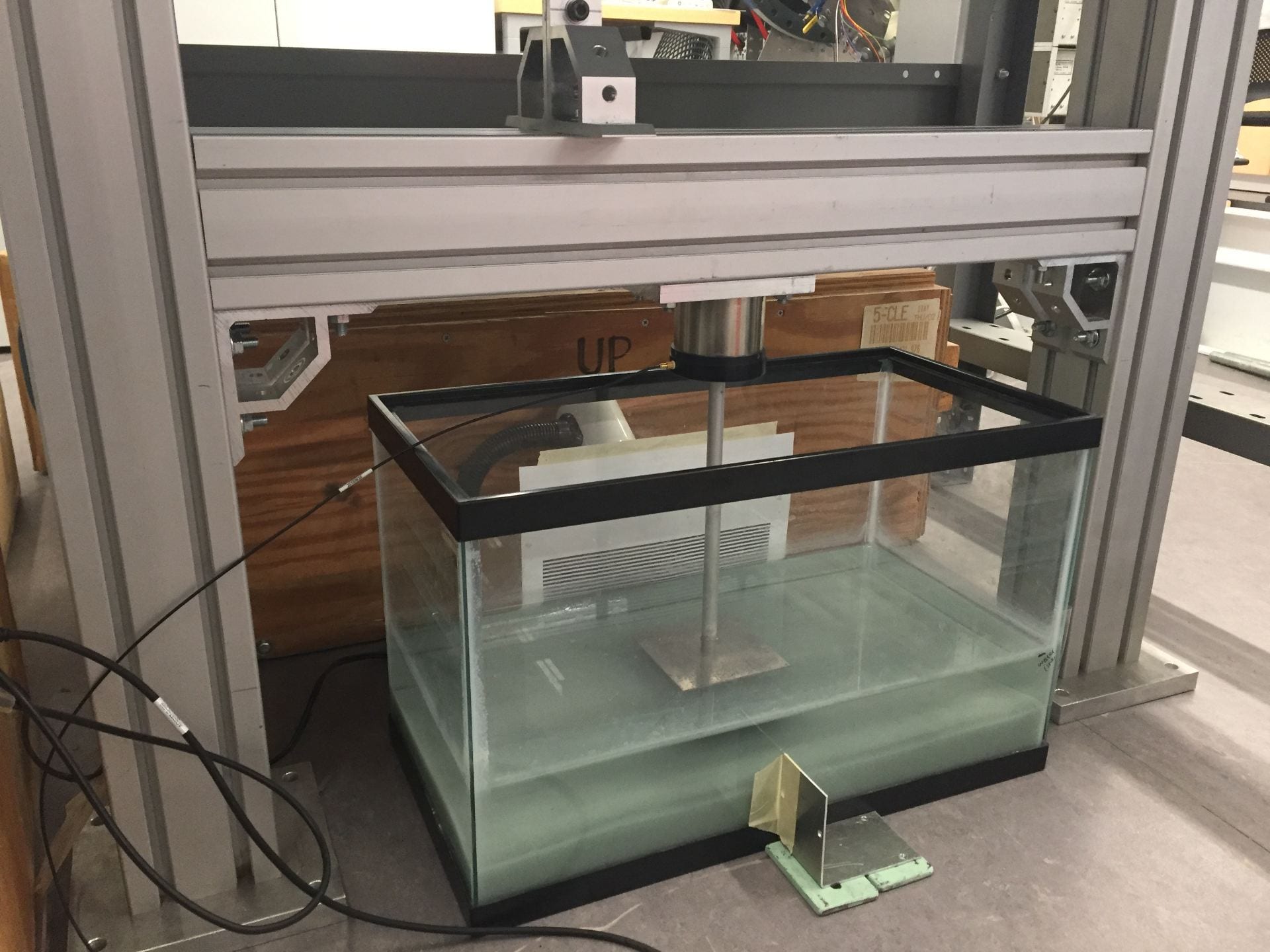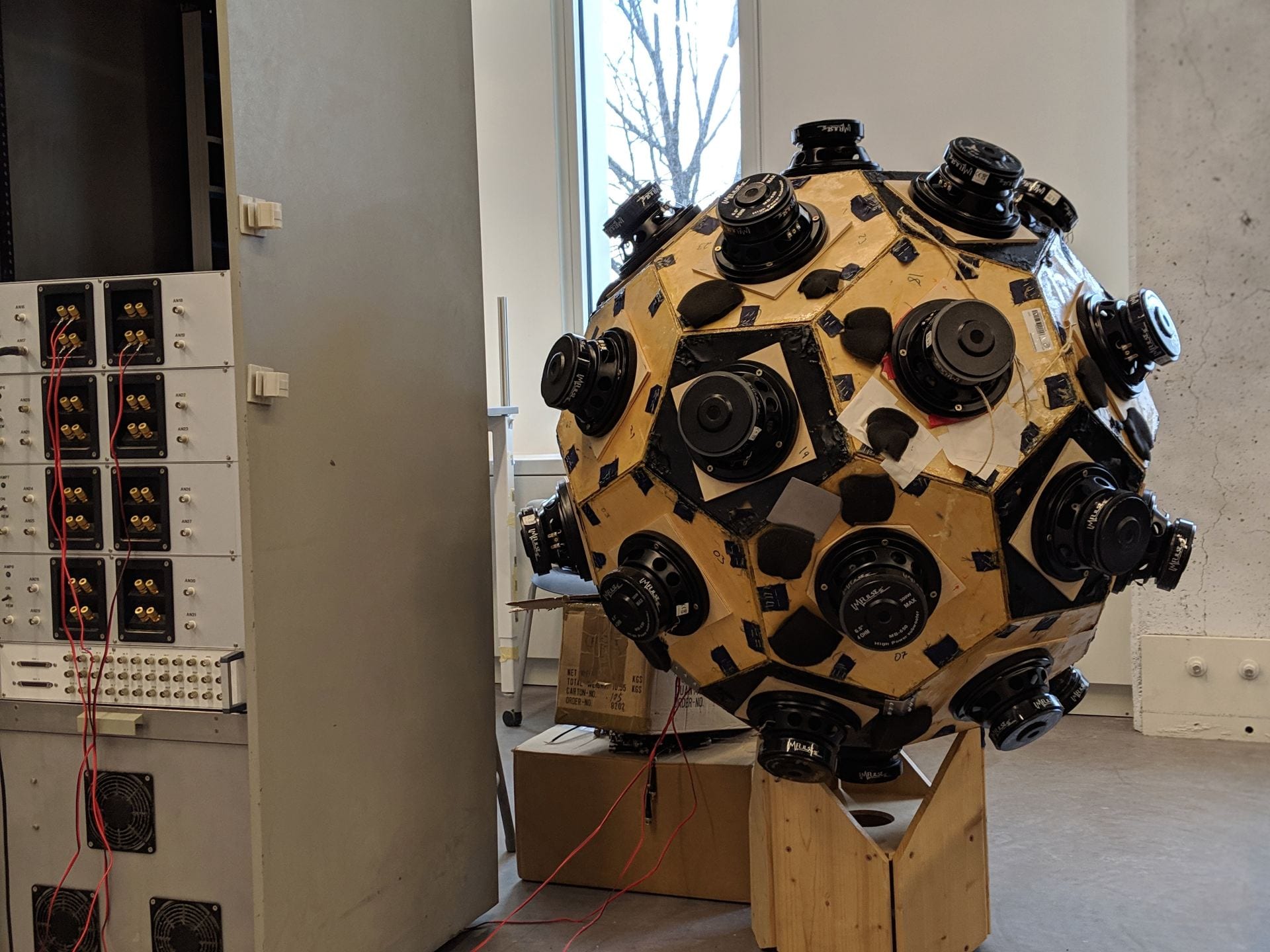
The Variable Density and Speed of Sound Vessel(VDSSV) is a pressure vessel about one meter in diameter. It is a laboratory in which the atmosphere can be changed – different gases such as air or sulfur hexafluoride can be maintained at pressures between 0.01 and 15 bar. Experiments in this laboratory quantify the effects of widely variable densities, viscosities and speeds of sound on fluid mechanics and turbulence.

The Warhaft Wind and Turbulent Tunnel (WWTT) has a one meter cross section and an eight meter long test section. Wind speeds up to 13 m/s can be sustained, and both temperature and velocity gradients can be established at the inlet to the test section.

The schlieren imaging setup allows the visualization of otherwise invisible flow. We have the ability to quantify density gradients by calibrating the system with a weak plano-convex lens. The image above shows the flow from a heat gun.

The splitter plate is placed in the WWTT to generate a shear layer.

The active grid produces vigorous turbulence in the WWTT by “chopping up” the wind passing through it with randomly rotating vanes.

A new iteration of the active grid has 3d printed vanes that can be individually controlled by servo motors allowing random patterns to be programmed to create turbulence.

In this tank we observe the development of bedforms beneath unsteady and turbulent flows, including novel bedforms created by oscillating pressure gradients.

The droplet collider is produces controlled collisions between water droplets so that their interactions with each other and the surrounding air can be quantified.

The soccer ball is the first experiment to produce widely variable anisotropy in a turbulent flow, and can also produce nearly isotropic turbulence. 32 loudspeakers form synthetic jets whose individual strengths can be modulated. The apparatus is on loan from the Max Planck Institute for Dynamics and Self-Organization in Göttingen, Germany.
Instrumentation includes:
–a custom high-speed high-resolution Lagrangian particle tracking and sizing (LPT+s) facility including digital cameras, long range microscope lenses, particle generators and high-power lighting.
–a Particle Image Velocimetry (PIV) facility analogous to the above LPT facility.
–3 channels of TSI Phase Doppler Particle Analyzer/Laser Doppler Velocimetry (PDPA/LDV).
–6 channels DISA and DANTEC hot-wire bridges with conventional and micro-fabricated probes.
